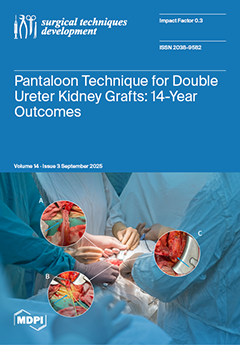Background: Hip fractures represent a major clinical challenge, particularly in elderly and frail patients, where postoperative pain control must balance effective analgesia with motor preservation to facilitate early mobilization. Various regional anesthesia techniques are used in this setting, including the pericapsular nerve group
[...] Read more.
Background: Hip fractures represent a major clinical challenge, particularly in elderly and frail patients, where postoperative pain control must balance effective analgesia with motor preservation to facilitate early mobilization. Various regional anesthesia techniques are used in this setting, including the pericapsular nerve group (PENG) block, fascia iliaca compartment block (FICB), femoral nerve block (FNB), and quadratus lumborum block (QLB), yet optimal strategies remain debated.
Objectives: To systematically review the efficacy, safety, and clinical applicability of major regional anesthesia techniques for pain management in hip fractures, including considerations of fracture type, surgical approach, and functional outcomes.
Methods: A systematic literature search was conducted following PRISMA 2020 guidelines in PubMed, Scopus, Web of Science, and the virtual library of the Hospital Central de la Defensa “Gómez Ulla” up to March 2025. Inclusion criteria were RCTs, systematic reviews, and meta-analyses evaluating regional anesthesia for hip surgery in adults. Risk of bias in RCTs was assessed using RoB 2.0, and certainty of evidence was evaluated using the GRADE approach.
Results: Twenty-nine studies were included, comprising RCTs, systematic reviews, and meta-analyses. PENG block demonstrated superior motor preservation and reduced opioid consumption compared to FICB and FNB, particularly in intracapsular fractures and anterior surgical approaches. FICB and combination strategies (PENG+LFCN or sciatic block) may provide broader analgesic coverage in extracapsular fractures or posterior approaches. The overall risk of bias across RCTs was predominantly low, and certainty of evidence ranged from moderate to high for key outcomes. No significant safety concerns were identified across techniques, although reporting of adverse events was inconsistent.
Conclusions: PENG block appears to offer a favorable balance of analgesia and motor preservation in hip fracture surgery, particularly for intracapsular fractures. For extracapsular fractures or posterior approaches, combination strategies may enhance analgesic coverage. Selection of block technique should be tailored to fracture type, surgical approach, and patient-specific functional goals.
Full article




